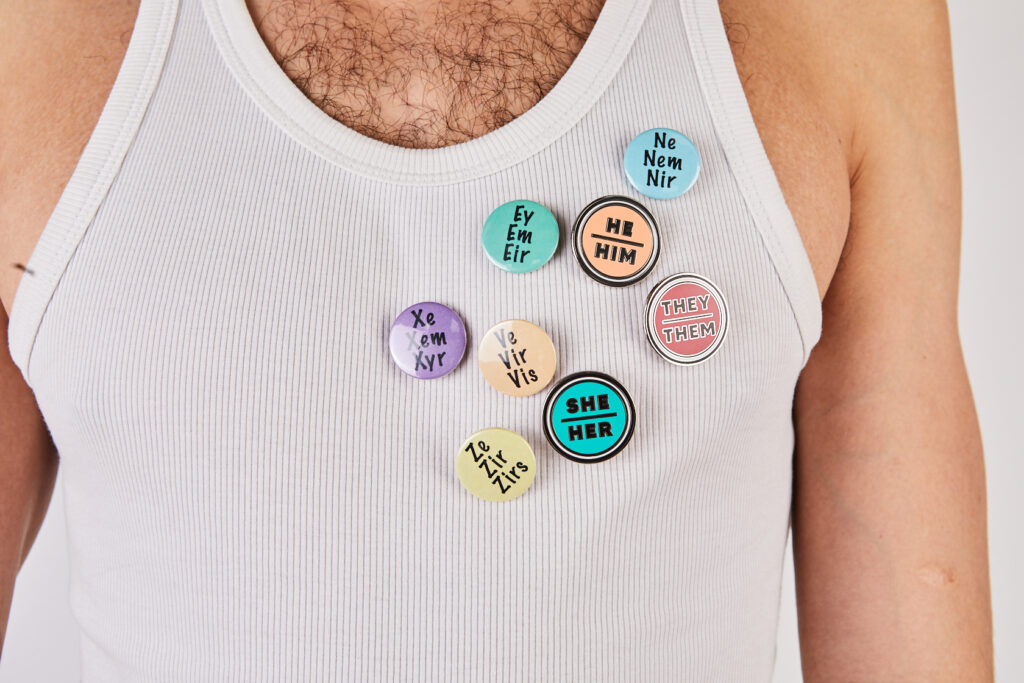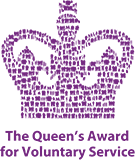
Pronouns are the words we use to refer to people when we’re not talking directly to them, and they can be used instead of names in conversation. Often, they have gendered implications when we use them. Common pronouns include she/her/hers, he/him/his and they/them/theirs.
Everybody has pronouns that they like to be called by, not just trans and non-binary people.
Some people may ask to be addressed with they/them/their pronouns, instead of he/him/his or she/her/hers.
Others may believe that it is grammatically incorrect to use they/them/theirs to refer to a singular person, however this is false. We commonly use they/them/their to refer to people we can’t see or don’t personally know, and in classical literature, Geoffrey Chaucer, William Shakespeare and Jane Austen all used them/them/their pronouns to refer to singular characters.
We can’t always tell someone’s gender just by looking at them, and we know there are more genders than just “man” and “woman”. Using they/them pronouns for people as standard before you know their gender or pronouns can be a useful way to avoid using the wrong pronouns by mistake.
How do I know someone’s pronouns and gender?
If you’re not sure of a person’s gender, often you don’t really need to know.
If you are having a conversation with or about a person, it’s polite to ask for a person’s pronouns. You can ask the person privately “How would you like me to refer to you?” or “Can I just check, what pronouns do you use?”
If you do need to know their gender, for example, if they are a service user at your workplace and you need to complete a demographic form for them, then do so as you would any other sensitive piece of information about a person. It is best to ask privately, and perhaps alongside other information you need to collect, in order not to single that aspect of them out as “unusual”.
But what if I make a mistake?
Everyone makes mistakes from time to time, it’s just important that you acknowledge them and learn from them.
If you make a mistake, acknowledge it, apologise quickly, correct yourself, and move on with the conversation. Do not draw lots of attention to the mistake, and do not over-apologise, as this will often make the situation more uncomfortable.
The person you have misgendered may be annoyed or angry, but these feelings are often not directed at you personally, but the general experience of being misgendered repeatedly. Using a different name or pronouns is one of one of the few ways we can socially affirm our gender, particularly early in transition, and so it may feel particularly invalidating to have people misgender you in this way.
Do not take these feelings personally but use it as motivation to try and do better next time.
Neo-pronouns
Neo-pronouns are new pronouns created by trans, non-binary and intersex communities to speak to their particular experiences of gender. More common neo-pronouns include xe/xem/xyr, fae/faer and thon/thons.
These pronouns are used in the same way as he/she/they pronouns but may require you to think more carefully before you address someone to ensure you are using the correct words. It may also be helpful for you to practice using these pronouns correctly in private if you are struggling.
Examples:
“Xe told me that xyr dog had to go to the vet”
“I saw Alex today, and fae were wearing a cool t-shirt – I told faer that fae looked really nice!”
“Thon brought that phone thonself – if I need one I’ll borrow thon’s”
Using different pronouns in different spaces
Some people may use different pronouns depending on who they are with or the space that they are in. We might also use different pronouns for safety reasons.
For example, some people may use he/him pronouns at their work, but they/them pronouns at their community group. This could be personal preference or because they feel unsafe using gender-neutral pronouns at their work. Others may use neo-pronouns online but not in person.
Some people may use pronouns from a different language or culture than you are used to. We might use these pronouns all the time or may only use these when we are at events celebrating our heritage or culture, or with other members of our community.
Additionally, some people may only be comfortable with certain people using particular pronouns for them. For example, we might ask women to address us with she/her/hers but ask others to use xe/xem/xyr. We might prefer trans and non-binary people to use fae/faer/faerself to talk about us but ask cis people to use they/them/theirs.
As always, you should be led by the individual’s wishes, and if they tell you to use different pronouns than you are used to, you should respect this as best as you can.
Using more than one pronoun
Some people may use more than one pronoun to talk about themselves. This is commonly written as he/they, they/she, xe/she, fae/he, he/she/they or any combination of two or more pronouns.
If this is the case, you should alternate between the pronouns when you are talking about the person, unless they give you more specific instructions.
How to tell people about your pronouns
It’s good practice to state your pronouns when you introduce yourself (as long as you feel safe doing so), as it normalises asking and telling people about the language you use to refer to yourself.
If you want, you could add your pronouns to your email signature and social media pages. You could even wear a badge with your pronouns on – these are commonly available online or at events such as Pride. This is a great way to make your workplace or organisation more inclusive for trans and non-binary community members.








